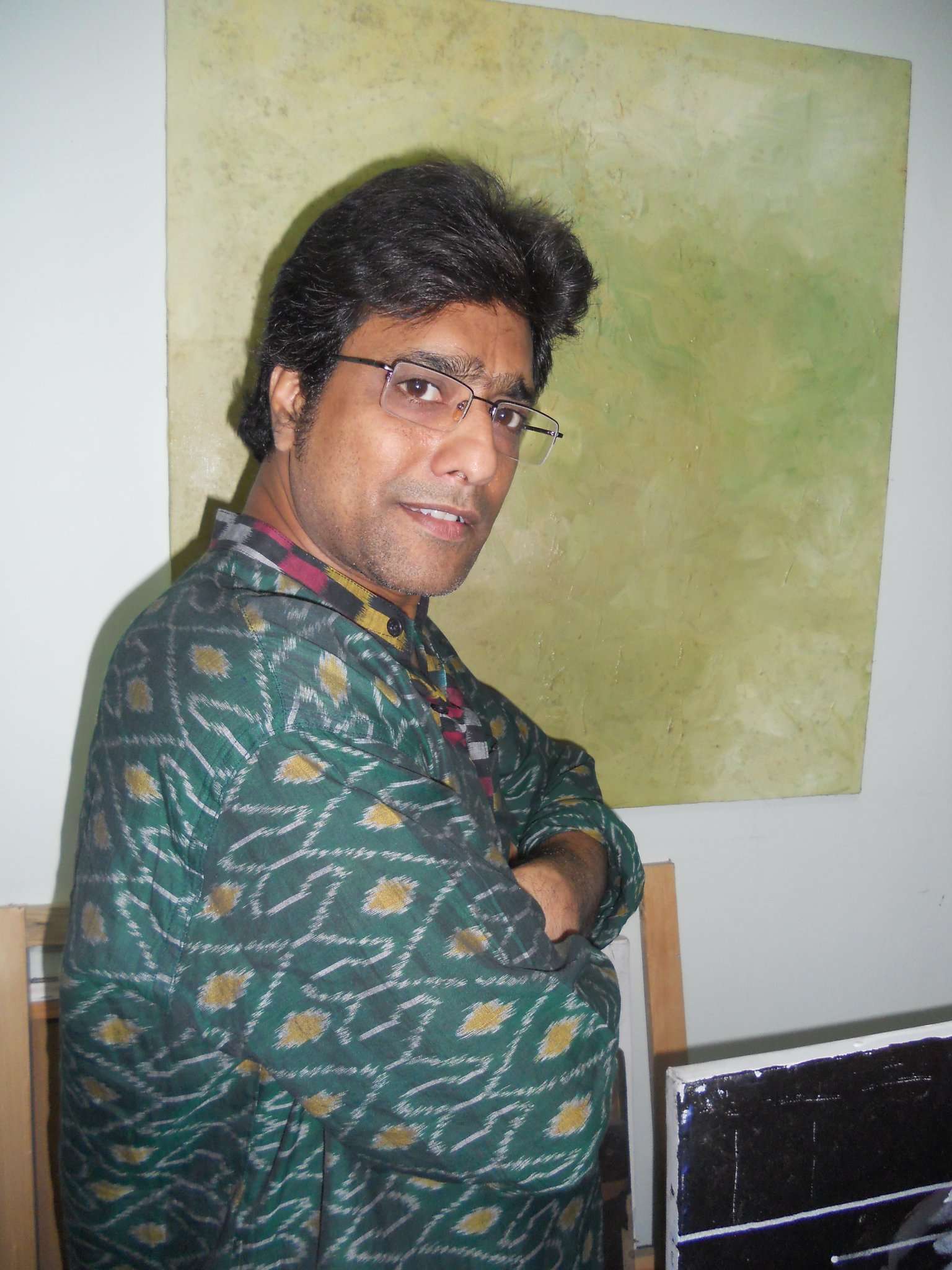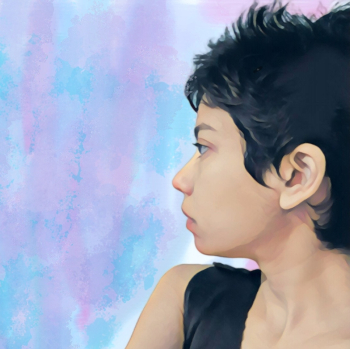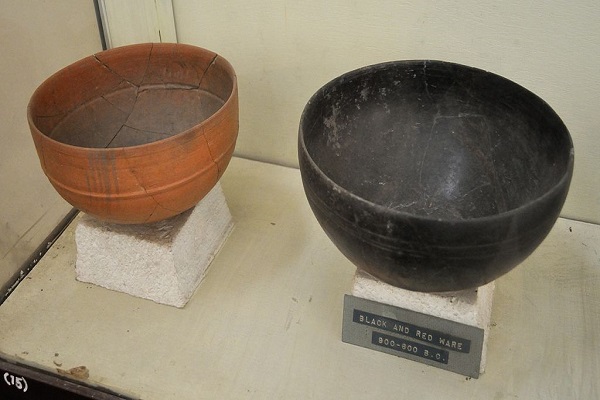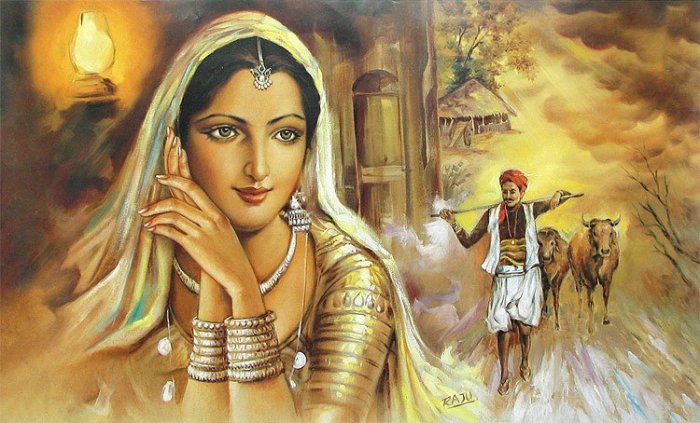
The main aim of the artist is to create beauty and while working on a particular painting they keep that in mind. This is why the Indian arts have a distinct position in the global arena. As compared to other forms of art like dance and music, paintings are capable to portray the feelings and emotions of the artist for a longer period. In simple words, Indian paintings have the capability to portray human emotions and hold them for a longer period.
Style of Indian paintings varies from region to region. It has gone through many changes since prehistoric times. Like the Ajanta-Ellora cave paintings depicts the stories of different groups of people with different religion and culture. The paintings there are explicit in their spirituality and point of being sensual. It portrays Buddha, sleeping women and love scenes, these Indian painting ideas can inspire any artist looking to create mesmerizing art.
As time passed the way of doing the painting changed. Initially, the caves and leaves were used for painting but now canvases and papers are used. New and different mediums have also evolved from time to time but the characteristics of the Indian paintings have always remained the same.
India's tradition, cultural sentiments and religious beliefs influence different styles of Indian art and paintings. The paintings are classified into large number of forms which are Rajput painting, Warli painting, Mali painting, Kalighat painting, Maithili painting, Mughal painting, Tanjore painting, Jadupatua painting, Puri painting, Miniature painting, Mysore painting, Phad painting, Mural painting, Pahari painting.
All these forms are popular worldwide. To decorate their houses the art admirers from all around the world have a desire to decorate their houses and offices with these Indian paintings. With the advancement of the technology and with the introduction of online art galleries the worries of buyers and art collectors have vanished. From Online Art Galleries you can purchase the desired paintings in a fraction of seconds. It is convenient as well as much cheaper from the conventional art galleries.
Indian Paintings - Walk Through the Different Shades
Here is a blunt glimpse of sundry art forms that have contributed to making the Indian painting genre so diversified and deep:
Cave Art
Who would have believed that during the times when humans lived in caves, art existed? The rich and complex history of Indian paintings spans thousands of years with its origin in the prehistoric times. When you look at the Bhimbetka caves of Madhya Pradesh, which has numerous wall paintings in the caves, you understand the time slippage through which art has survived miraculously. Along with this, another epitome of prehistoric cum cave art can be seen in the sites of Ajanta Ellora, Sittanavasal, Bagh, etc. These sites also have frescos of deities like Buddha, Shiva, Krishna, etc, displaying the versatility of Indian art.
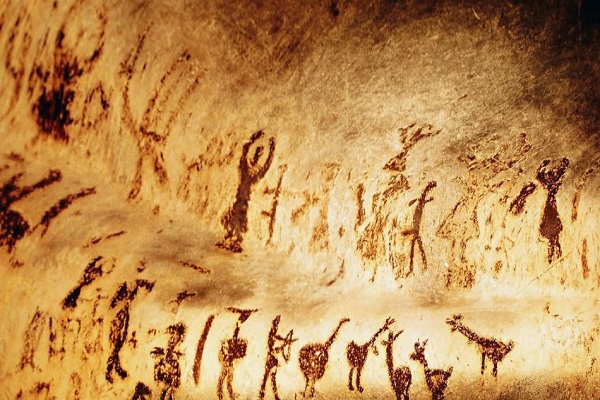
Madhubani
Loaded with a spectacular set of impeccable patterns and rich history, Madhubani paintings stand tall at the pinnacle of Indian art forms. This art form is known to originate way back in the times of Ramayana during the wedding preparation of Lord Rama and Goddess Sita. It was King Janaka who summoned all his prominent artists and told them to decorate the entire palace with mesmerising paintings on the auspicious wedding. During that time, villagers used to paint these artworks on the mud walls of their homes. The theme of these paintings is mainly cultural and traditional. Any art lover will fall in love with the appealing geometric designs, symbolic depictions, and representation of events from religious mythologies. Madhubani paintings are still available in numerous offline/online art galleries and come in five genres named as Godna, Kohbar, Bharni, Tantrik, and Katchni.
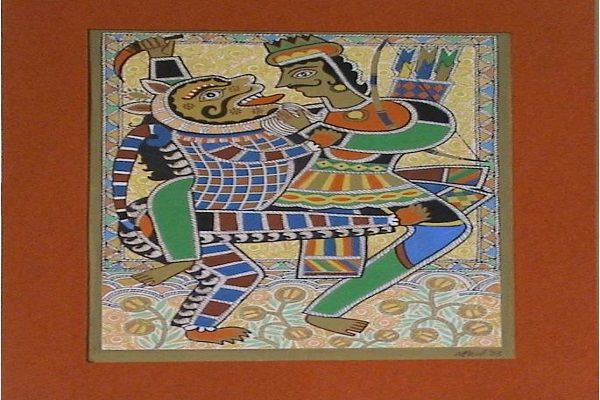
Phad
You must have seen in any Bollywood flick that represents historic times that messengers used to read from a scroll to communicate with another state’s king. Phad paintings have their origin in Rajasthan and are basically the artworks made on the scrolls. There is no precise origination date for Phad artworks but it is estimated that this style is approximately 1000 years old. These scroll paintings have scenes and tales of heroes and deities depicted on cloth scrolls tinges of red, orange, and yellow. The subject matter of Phad paintings swirls around representations of battlefields, adventurous tales, epic love stories, and affluent princely states. This form of folk painting is known for embedding more than one story in a single creation without compromising on the aesthetic of the artwork.
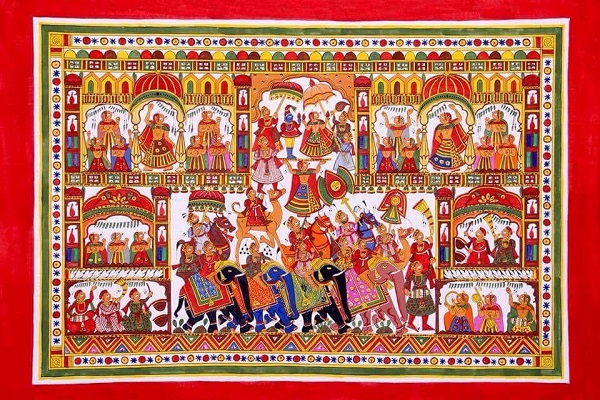
Warli
Sourced in the Thane and Nasik region of Maharashtra, Warli paintings are around 2500 years old art form that is known to represent mundane routines of the people living in the tribe and the beauty of nature. Daily activities such as dancing, farming, praying, etc became the center of creation for the artists making Warli paintings. Similar to their dotage, the techniques used to make these paintings are also conventional. For instance, in the older times, women used branches to make buoyant patterns using rice paste that is embedded on the mud walls of houses. The artworks were used to celebrate different occasions like wedding ceremony and harvesting season.
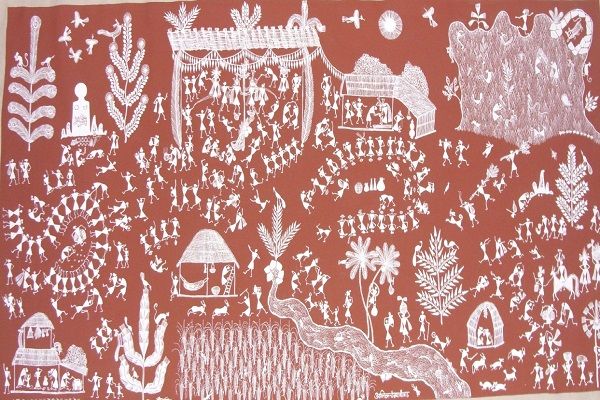
Kalamkari
India is known to shelter and nourish different civilisations in its lap from time to time. Mughals came to India and ruled a major chunk of the nation for hundreds of years. Kalamkari is the gift of Persia that was introduced in Indian art in the 15th century. The name, Kalamkari itself got its origination from two words ‘Kalam’ meaning pen and ‘Kari’ that means artistry. This enchanting artistry is incredibly passed on through generations and is still practiced in the Andhra Pradesh state. Kalamkari paintings are known to showcase the spectacular animal depictions, flower representations, and blissful Mehrab patterns. Intriguingly, these artworks also come in Kalamkari textiles and are made using shades like black, mustard, rust, indigo, and green.
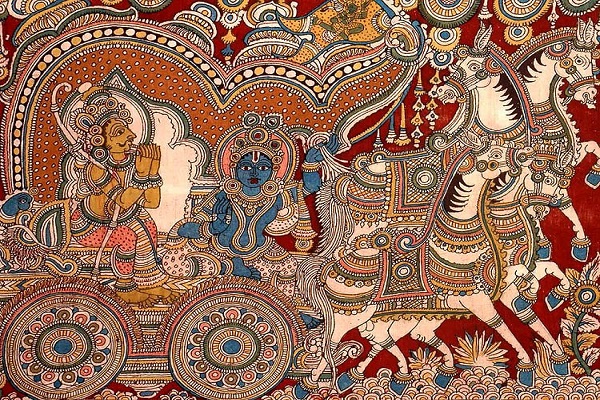
Gond
The origination of Gond paintings goes back to the Gondi tribe located in central India. Artists develop enthralling depictions representing the mythological stories, oral narrations, conventional songs, crucial happenings, cultural rituals, and natural aesthetics using the appealing dash and dot patterns. The ecstasy, affluent specificity, and vivacious motifs of Gond paintings put them amongst the most appealing epitomes of Indian folk art. Traditionally, the colours were made using natural ingredients like plant sap, leaves, soils, mud, cow dung, etc. However, today’s artists utilise the water colors to make mesmerising paintings on canvas or paper.
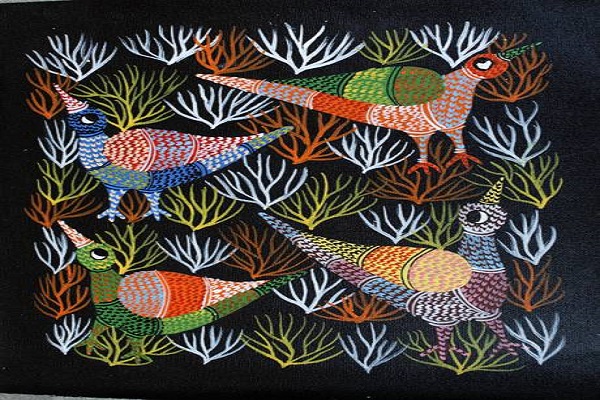
Pattachitra
This folk art of India is sourced from the region of Odisha. Themes of Pattachitra paintings were basically the depiction of mythological and religious epics such as Mahabharata and Ramayana. The term Pattachitra comes from two words; Patta that means leaf and Chitra that refers to painting. So, Pattachitra means painting on a leaf, which was the literal meaning when this art form was originated. The mind-boggling attributes of Pattachitra artworks include vivid outlines, vivacious colours, adorned borders, and flamboyant designs.
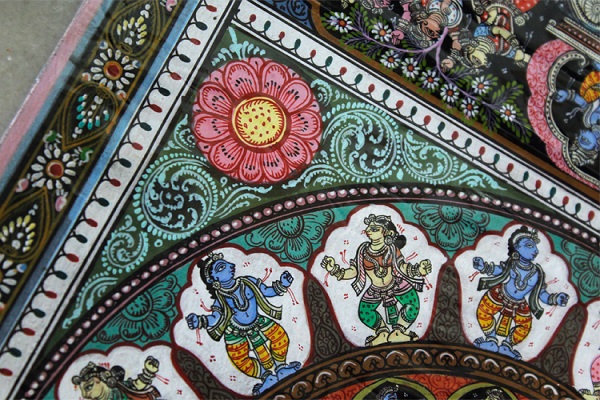
Pichwai
Made on the cloth paper, Pichwai paintings have their origin in Deccan, Aurangabad, and Nathdwara (Rajasthan) regions. Artists who started making Pichwai paintings were mainly focused on narrating the majestic stories of Krishna to the commoners. This art form is also practiced and available in the present scenario. Foreign art collectors show special interest in acquiring Pichwai artworks making these paintings as the major exporting product of Nathdwara. Artists today live in a closed community with regular communication because making Pichwai artwork is mainly a collective effort more than an individual’s contribution. If you ever want to see the depth of spirituality blended in an Indian artwork, Pichwai artworks are the best examples.
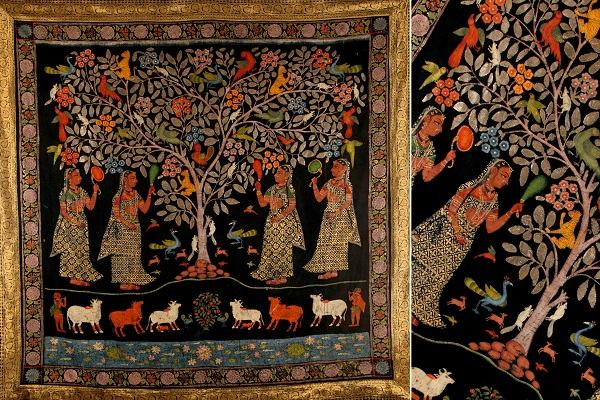
Miniature
Another product of the Mughals, miniature paintings are popular because of the sharp brushwork, in-depth work, blissful styles, and highly appealing looks. Originated in the 16th century, miniature paintings are also celebrated because of a splendid fusion of Islamic, Indian, and Persian art attributes. Artists used the natural stone colours on a paper-based canvas, also known as wasli. The ingredients that are utilised to craft such highly vivacious paintings gold, silver, colours extracted from minerals, valuable stones, and conch shells.
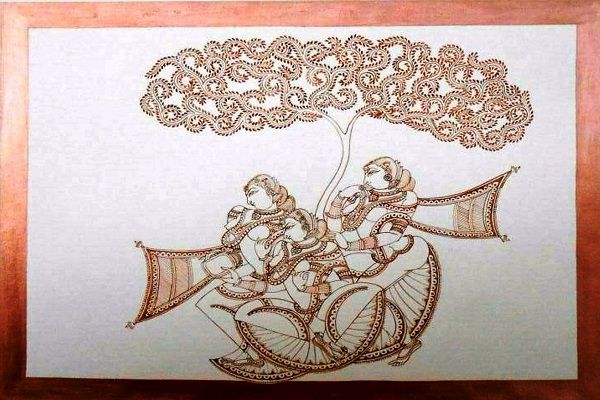
Mysore
Coming straight from the Mysore city (state of Karnataka), this art form carries rich antiquity of historical rulers. Originated somewhere between 1336 -1565 AD, Mysore paintings are known for their serenity, non-expressive shades, exquisiteness, explicit detailing, superior motifs, and ecstatic designs. With subject matters mostly revolving around the representation of deities and Hindu mythologies, Mysore paintings are a classic example of a mashup of art and spiritualism.
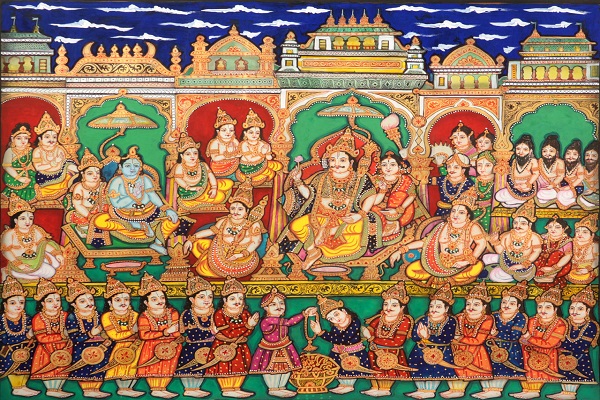
Kalighat
Coming from the state of Rasagullas and Misthi, Kalighat is another Indian folk art, which is still practiced. This form of Indian art is relatively new and was originated in 19th century in West Bengal, in the environs of Kalighat Kali Temple, near Calcutta (now Kolkata). Artists used to create enthralling designs on a paper. These artists were known as ‘Patuas’ who were mainly focused to show the mundane life routine of common people and depiction of religious deities. The style these artists choose remains subtle but very gratifying. Colours used in the creation process of these paintings were mainly natural. Some of the preferred colours to make Kalighat paintings red, white, blue, indigo, and ochre.
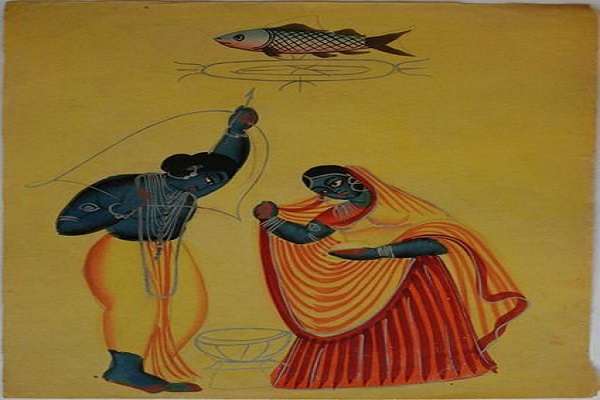
Kerala Murals
Whenever you get chance, try to make time for the enthralling and captivating frescos in the temples of Kerala. These frescos are popularly termed as Kerala Murals whose theme is centred on the representation of Hindu Mythological tales and depiction of legends from the religious epics. A good number of these mural paintings can be found in the ancient palaces of Kerala that tell us the royal stature of Kerala Murals during the period 9th to 12th century CE. Most famous mural paintings of this art form are Krishna’s depictions and the enigmatic artworks of Shiva and Shakti.
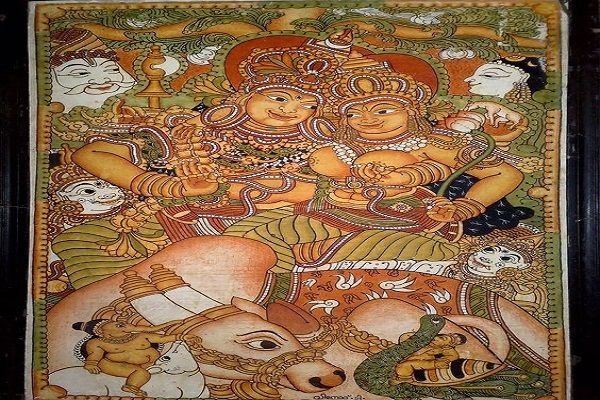
Types of Traditional Indian Paintings
|
Ancient |
Prehistoric (8000 BCE) |
Bhimbetaka Cave Paintings |
|
Bronze age and Indus Valley Civilization (5000 -1500 BCE) |
Ochre colored Pottery |
|
|
Pashupathinath seal |
||
|
Steatite statue of bearded priest |
||
|
Black and Red Ware Pottery |
||
|
Vedic Period and Iron age (1500 BCE-600 BCE) |
Painted Grey Ware |
|
|
Ajanta Cave Paintings (2nd century BCE – 7th century CE) |
||
|
Pattachitra Paintings (5th century BCE) |
||
|
Classical Period or Post-Vedic Period (600 BCE-10th century CE) |
Sigiriya (5th Century CE) |
|
|
Bagh Painting (6th Century – 7th Century CE) |
||
|
Badami Painting (6th Century CE) |
||
|
Medieval (8th-century AD-16th century AD) |
Early Medieval Period (8th-century AD-11th century AD) |
Panamalai and Sittanavasal Painting (8th Century – 9th Century CE) |
|
Ellora Painting (8th-9th centuries CE) |
||
|
Tanjore Painting (11th century CE) |
||
|
Late Medieval Period (12th-century AD-16th century AD) |
Vijayanagar Paintings (13th -15th century) |
|
|
Mughal Paintings (13th-16th century) |
||
|
Modern or Colonial (17th -20th century AD) |
Rajputani Miniature Paintings (17th -19th century)
|
Mewar |
|
Marwar |
||
|
Hadoti |
||
|
Dhundar |
1. Ancient
1.1 Prehistoric (8000 BCE)
- Bhimbetaka Cave Paintings
This UNESCO World Heritage Site is believed to be around 30,000 years old. They are situated in the foothills of Vindhyan Mountains in Raisen district of Madhya Pradesh. These were excavated by archaeologist V.S. Wakankar in the year 1957. Out of 760 shelters, only 500 are found to be painted ranging from Mesolithic to Medieval Periods.

1.2 Bronze age and Indus Valley Civilization (5000 -1500 BCE)
- Ochre Colored Pottery
B.B.Lal founded a special type of ceramic that was used by people who inhabited the Doab region between Ganga and Yamuna in 1951-52. In the 1950s, OCP ware was found at village Rajpur Parsu in District Bijnor, U.P.
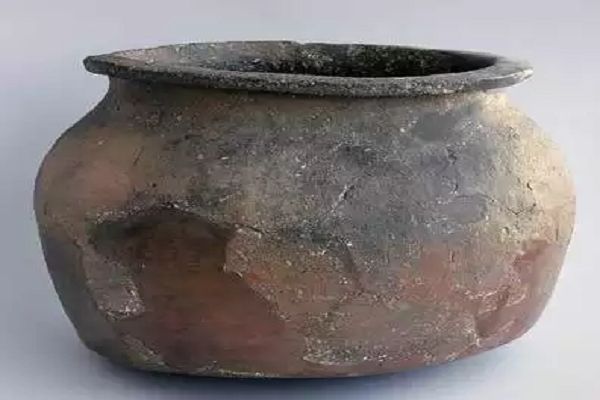
- Pashupathinath seal
It is a steatite seal found in Mohenjo-Daro that dates back to 2300 B.C. it shows a three-headed figure that is identified as Shiva, the lord of the animals.
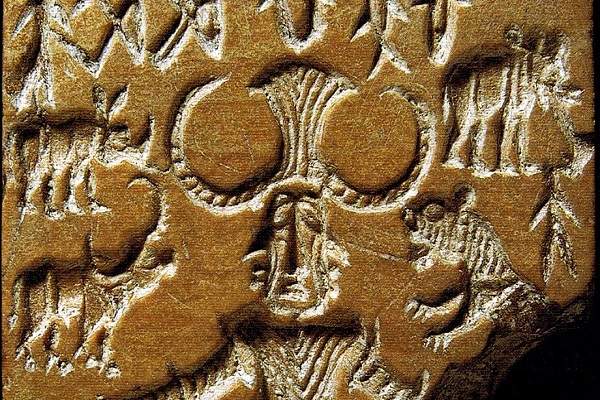
- Steatite Statue of the Bearded Priest
The steatite bust of The Priest-King was found in the excavation of 1927 at Mohenjo-Daro. The figure is seen to be adorning a headband and an armband. The drape is floral and suggests that man belonged to an upper class. Whole in the ears implies that a necklace is missing that was initially there.

- Black and Red Ware Pottery
This kind of pottery was found in the 1960s at Atranjikhera in the state of U.P. it is situated on the banks of Kali Nadi, a tributary to Ganga. It was excavated by R C Gaur in 1962.
1.3 Vedic Period and Iron Age (1500 BCE-600 BCE)
- Painted Grey Ware
Among many other sites, Ahichchhatra that is located near Bareilly District of U.P. is the first that was reported to have PGW. People of this region lived in more sophisticated houses than their predecessors. The density of these wares was higher than OCP and BRW cultures.
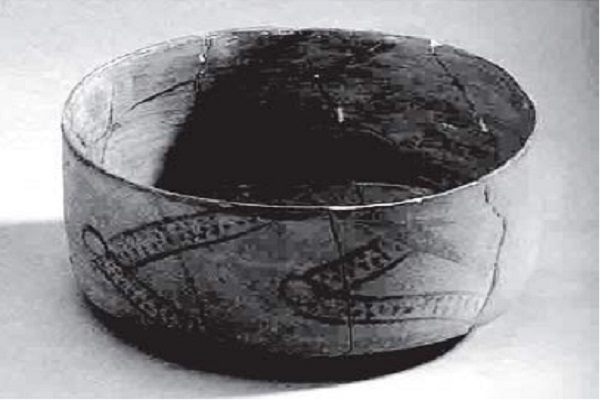
- Ajanta Cave Paintings (2nd century BCE – 7th century CE)
The work on this UNESCO World Heritage Site began under the patronage of the Satvahana Dynasty influenced by Hinayana Sect and extended to as late as the Vakataka Period influenced by Mahayana Sect. It is a plethora of 30 Buddhist rock-cut caves surrounding river Waghur, District Aurangabad in the state of Maharashtra.
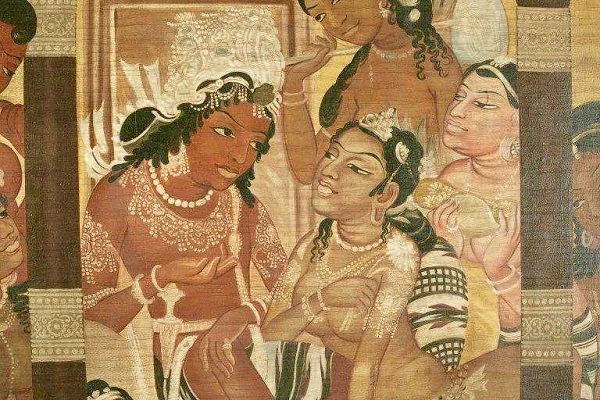
- Pattachitra Paintings (5th century BCE)
‘Patta’ means leaf and ‘Chitra’ means image. The origin of the painting dates back to the 5th century BC in ancient Odisha. The purpose of creating them is religious as Pattachitras of deities are worshipped when Lord Jagannath goes into hibernation according to Jagannath Sanskriti after the Rath Yatra. The best facet of this art could be seen in Puri, Konark and UNESCO World Heritage Village, Raghurajpur. The Elegance of this Indian painting style is appreciated globally.
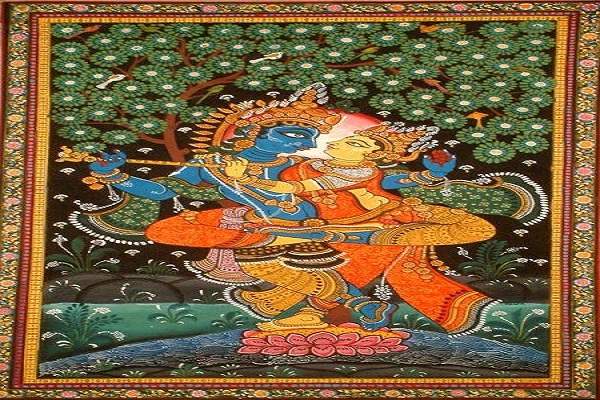
1.4 Classical Period or Post-Vedic Period (600 BCE-10th century CE)
- Sigiriya (5th Century CE)
The work Sigiriya is derivated from Si-hagri or claw of a lion. It is a plateau formed by the deposition of magma of an extinct volcano. The rock fortress, famous for its surviving 18 frescoes was developed in 5th century A.D. by King Kashyapa. It is situated between the Golden Cave Temple of Dambulla and Habarane. It is a UNESCO World Heritage Site in the year 1892.
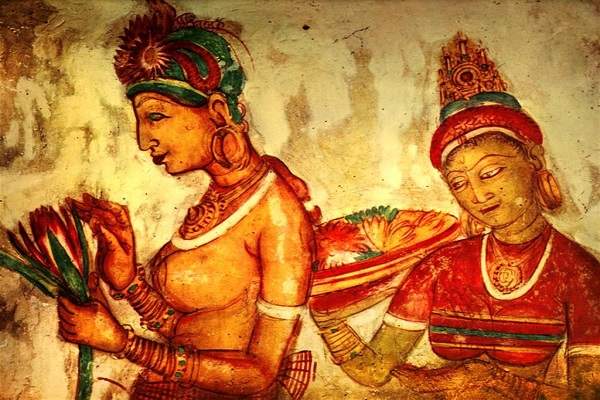
- Bagh Painting (6th Century – 7th Century CE)
The rock-cut cave lies 7 KM away from village Bagh meaning Tiger on the banks of river Baghini, Tehsil Kukshi, District Dhar, Madhya Pradesh. The group of 5 caves, initially 9, are the finest example of Buddhist art. The painting of Boddhisattva Padmapani here resembles one in Ajanta Caves. The discovery of this site is ascribed to an account by Captain F Dangerfield.
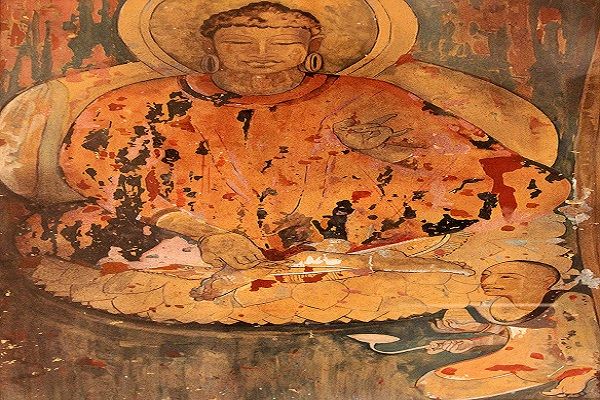
- Badami Painting (6th Century CE)
Badami or Vatapi lies in the valley of river Malaprabha, District Bagalkot, Karnataka. It served as a capital of Chalukyas founded by Pulkeshin I in 543 A.D. after the decline of Vakataka. These Indian paintings were completed during the reign of King Mangalishwara. In the cluster of four caves, the first one relates to Lord Shiva, the next two caves to various incarnations of Lord Vishnu, and the last one to Adinatha or Rishabhnatha, the founder of Jainism.
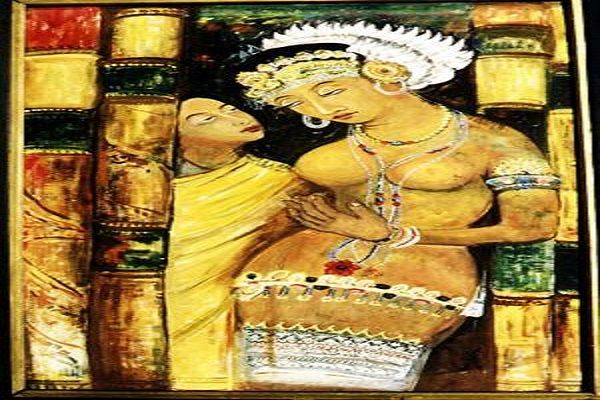
2. Medieval (8th-century AD-16th century AD)
2.1 Early Medieval Period (8th-century AD-11th century AD)
- Panamalai and Sittanavasal Painting (8th Century – 9th Century CE)
Panamali paintings are housed in Talagirishwara Temple dedicated to Lord Shiva in the city of Panamalai, Tamil Nadu. The temple was built under the patronage of Pallava ruler Narasimhavarman II (690-728 A.D.). Only a painting of Parvathi has survived.

Sittanavasal is located in district Pudukkottai in the state of Tamil Nadu. The cave served as monastery also known as Arivar Kovil. They show the earliest example of Jaina paintings that date back to the 2nd century. These were made during the reign of Mahendravarman, a noted Pallava ruler. One of the most vivacious and vivid painting is that of 23rd Jain Tirthankar Parshavanath holding a lotus.
- Ellora Painting (8th-9th centuries CE)
Only 5 caves amongst the 34 caves in Ellora have paintings. The artwork in Kailash Temple is finest of them all. However, the motifs of art belong to Hinduism, Jainism, and Buddhism. The paintings are said to have been made in parts. Figurines of Lord Vishnu and his consort Laxmi was made in the first part while an exquisite masterpiece depicting the marriage of Lord Shiva is depicted.
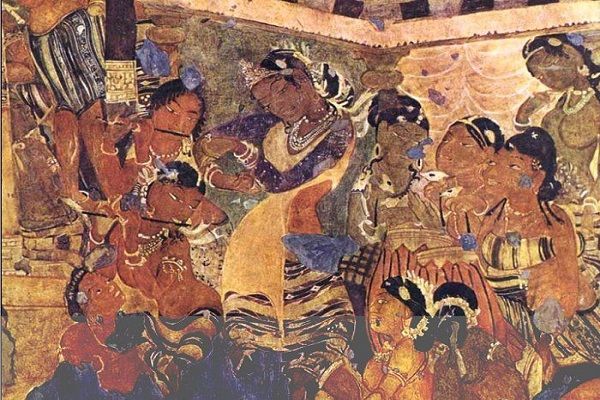
- Tanjore Painting (11th century CE)
Tanjore or Thanjavur form of painting is native to the city of Thanjavur in Tamil Nadu. After the decline of Pallavas, Cholas emerged to become sole suzerain in southern India. They were contemporary of the Rashtrakutas of the Deccan. The paintings give the effect of a 3D structure because they are made by embellishing gold, silver, copper, and valuable gems.
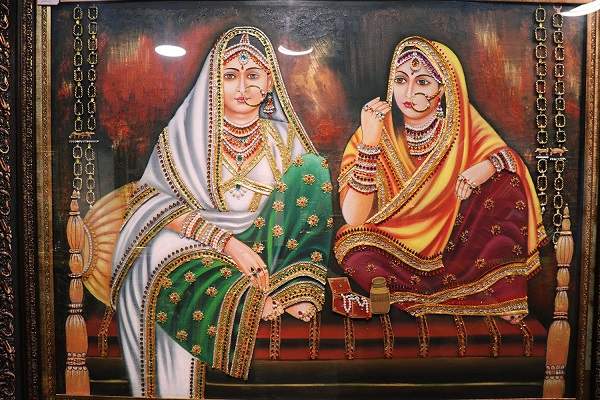
2.2 Late Medieval Period (12th century AD-16th century AD)
- Vijayanagar Paintings (13th -15th century)
The Vijaynagar Empire was established by Harihara in the 13th century. It is famous for ceiling paintings of Shiva in the Virupaksha Temple, Hampi, Bellary district in Karnataka.
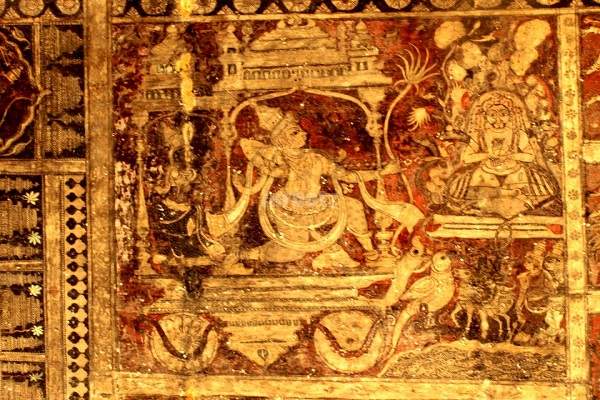
The sanctum sanctorum of Kalyana Sundareswara Temple has beautiful paintings. It is located in Nallur Village in district Tiruvarur. Iconic paintings depicting Narada surfaced during a renovation which was conducted under the guidance of Kudvayil Balasubramanian. Wall art at Lepakshi temple is also commendable.
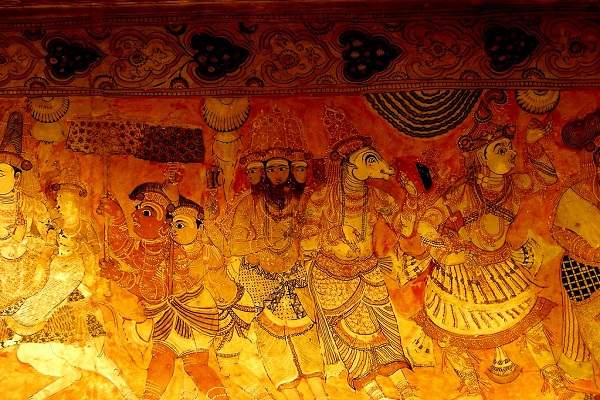
- Mughal Paintings (13th-16th century)
The Mughal Empire was established by Babur, the last of the Timurids in the later part of the 14th century. Humayun laid the foundation of Mughal paintings during his exile in Persia from where he befriended two eminent Persian artists, Mir Sayyid Ali and Abdus Samad, who also enjoyed the patronage of Akbar. His biography Humanyunnama was illustrated with 1200 beautiful paintings. Many artists were hired from all parts of India. Abul Fazal identifies 15 painters like Daswant, Basawan, Kesav and Farrukh Beg amongst all to be the best.
Akbar commissioned paintings to be made portraying Persian tales like Tutinama and others i.e. Gulistan, Darab Nama, Khamsa of Nizami, Baharistan. He ordered to illustrate Humzanama. It is an account of the life of Amir Hamza. More than 1400 paintings were created to beautify the creation of this.
As a result of European influence, the paintings that Jahangir commissioned were made with lighter colors with soft strokes. He is known to have an acute sense as that of a polished art critic. His autobiography ‘Jehangirnama’ was illustrated with many paintings. His court was attended by artists like Abul Hasan, Mansaur, Manohar, and Baswan.
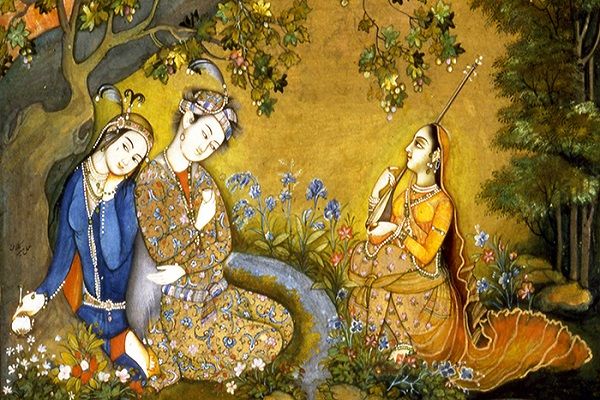
Artwork produced during the reign of Shah Jahan was more realistic and sophisticated. Though he preferred paintings to be made in particular style only, the subject matter of them was bold i.e. he was interested in expressing the beauty of nature and didn't shy away to commission the work that had intimate moments between lovers as their motif. He ordered Padshahnama, the eulogies are written in praise of the mighty king, to be plated in gold.
Aurangzeb was not much of an admirer of art. His political ambitions were way too high for that matter. Mughal paintings didn’t enjoy the support of royalty during his reign. But, the miniature painting style had become popular with the commoners by this time. This art form witnessed a decline as he later ordered the artisans who were independently producing paintings to close their shops as he saw the activity as futile.
3. Modern or Colonial (17th -20th century AD)
3.1 Rajputani Miniature Paintings (17th -19th century)
- Mewar
Paintings from four regions are collectively ascribed to the Mewar school of Rajasthani paintings i.e. Mewar Deograh, Pratapgarh, and Nathwara. Maharana Kumbha Paratap and Jagat Singh were main patrons of this style. Balagopal Stuti serves as the best example of Mewar School. Other notable works are Gita Govinda, Dhola Maru, and Chawand Rangamala.
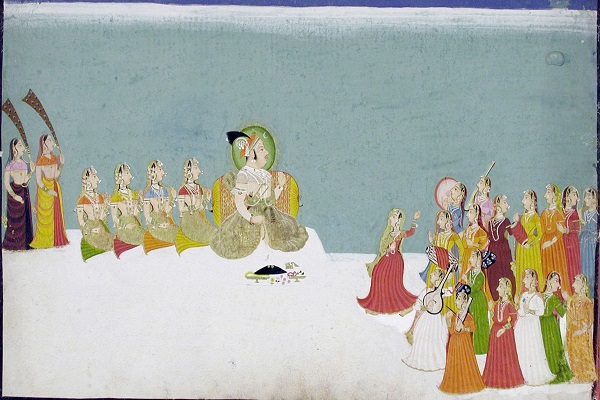
- Marwar
The miniature style developed in the royal families of Bikaner, Kishangarh, Pali, Nagaur, Ghanerao and Jodhpur collectively come under this school. Ajit Singh, Sawant Singh aka Nagari Das, Abhai Singh were main patrons and this style faded under the reign of Man Singh in the later 18th century. Women were painted with long Necks and elongated eyes.
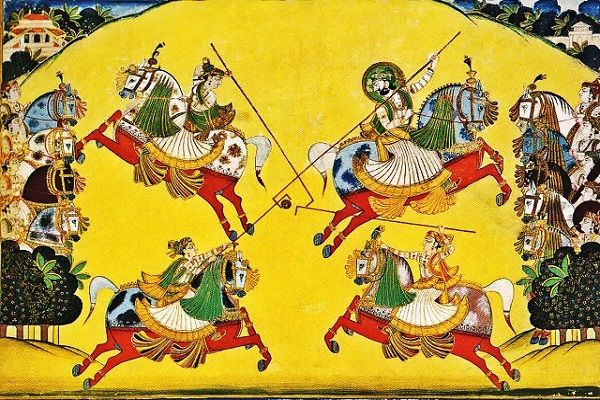
- Hadoti
It is related to Bundi and Kota techniques that are influenced by the Mughal, Chunar and Deccani style of paintings. The depiction of Nayak and Nayika or man and woman is graceful and elegant. The feminine figures could be distinctly identified for having their features prominently outlines like round and symmetrical face, chins and foreheads, well-formed noses, and slim limbs.
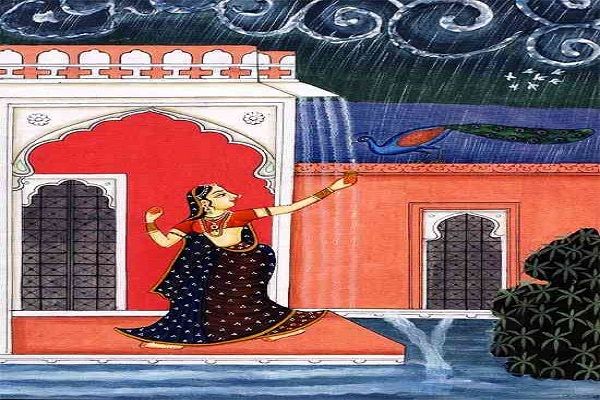
- Dhundar
The art of Amber, Shekhawati, Jaipur, and Alwar is studied under this head. It is famous for including folk forms into the mainstream. The legacy of Kusha and Kachchava rulers lead to the culmination of Dhundar Indian paintings. One of the laudable work from this school is the portrait of Sawai Raja Madho Singh. During the reign of Jai Singh, Sahibram and Muhammad Shah created some beautiful works by intermixing Rajputani and Mughal style.

Final Words
In a nutshell, Indian traditional art comprises a versatile and aesthetically entrancing collection of Indian paintings that will make you fall with them eventually. The charisma of bold splashy colours, the spectacle that these artworks spread in the heart & mind of the observers, and the unforgettable impression of these superiorly crafted work of human genius make these pieces a must-have for the art zealots like you. So, if you haven’t yet approached any online art gallery that is offering Indian paintings, do it now. It’s never too late. Thanks!















